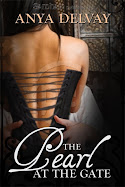
The course of history is marked by a series of turning points—the most important actions of an age; the moments and decisions that caused a country, group of people or even an individual to change in an important way. We learn history in school that way too, with the development of civilization broken into eras and punctuated with seminal issues and events. But authors, given to asking, “What if…?” sometimes are tempted to tinker with the past and by doing so create a new or appreciable different timeline.
Alternate histories, in fact.
This often neglected sub-genre of romance in particular has undergone a bit of resurgence recently with the advent of Steampunk, where authors ask, “What if the Victorians had more advanced, steam driven machinery?” But there are so many other ways this thought process can be used to create exciting and intriguing worlds for characters to inhabit. Below are a few examples of some interesting questions that could lead to a completely different world than the one we know or read about in the history books.
What if the Persians had won at the Hot Gates?
What if Boudicca had won against the Romans?
What if Christianity had never taken root?
What if the Roman Empire hadn’t fallen?
What if Hitler had conquered England?
What if the British had defeated the Americans during the Revolution?
What if Texas had become a country?
What if the Irish branch of the Catholic Church had triumphed over the Roman branch?
The list is endless, and each question leads to more questions, until a writer can make herself crazy just thinking about the ramifications! The trick is, I think, to make whatever you’ve changed make sense. Some authors can get away with simply saying, “In my world, this is what is happening. Don’t ask me why, or to explain how—just accept it,” but most readers need a little more. Usually, it helps to start with the “What if…?” question and move forward, but sometimes characters and situations can just jump into your head fully formed, and then comes the hard part—figuring why they ended up the way they did. What changed in the past to bring them to the place they are at the time the novel starts?
In Beyond Prudence I imagined a one-two blow to England, with an influenza-type disease following a few years of drought and poor harvests decimating the population—in particular the women. The rich have used their money and influence to spur development of the machinery necessary to uphold their rather indolent lives. Also, because of scarcity, women of the higher classes are considered assets to be protected. When William Foreman, son of an unmarried tannery worker, meets the Honourable Prudence Hastings, he knows there can never be anything between them. Prudence, who has already experienced the vagaries of life, has her work cut out convincing him otherwise!
It was a great deal of fun imagining the world and—because it is, at heart, fantasy—peopling it with automatons with as much personality as the humans! Personally, I’d like to see more books in this kind of vein, but then I’m also the person who likes historical romances set in unusual places or times. The trick is not to overwhelm me with so much erroneous detail I feel like I’m reading a history book, but give me enough to make the era or setting come alive. And, of course, still give me a love story that will make me sigh happily.














